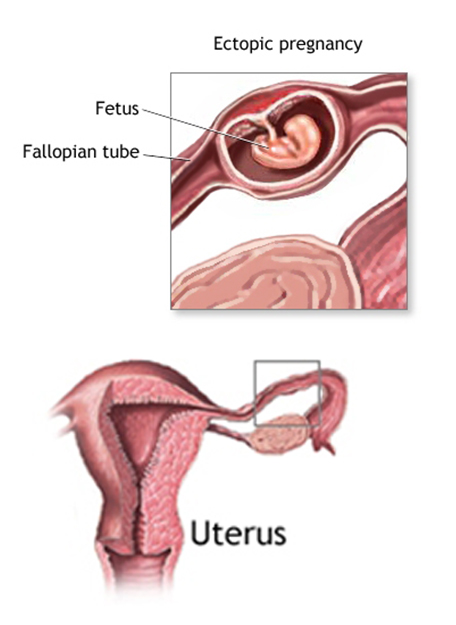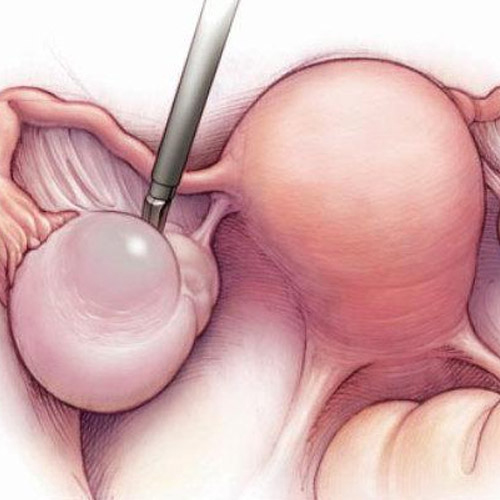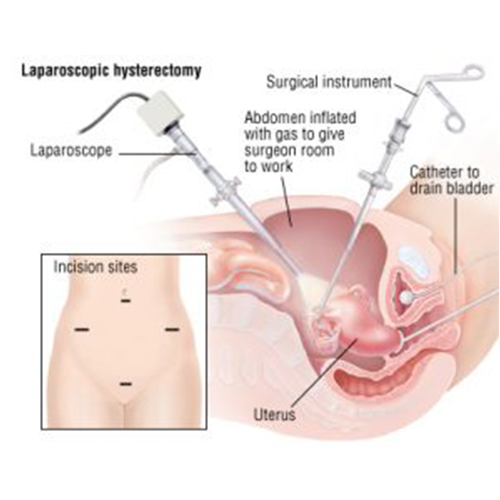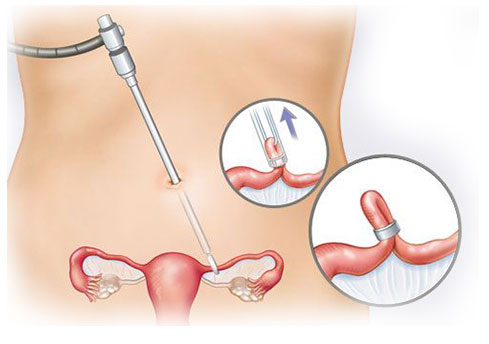Specialities
Laparoscopy in Gynac & Obs
-
Ectopic Pregnancy - In a normal pregnancy, the egg is fertilized in your fallopian tube. It then travels through the tube and lands in the uterus, where it starts growing. But in an ectopic pregnancy, the egg doesn't make it to your uterus. Usually, it gets stuck in your fallopian tube, either because of a problem with your tube or the egg. Sometimes, the fertilized egg implants in your ovary, cervix, or somewhere else in your abdomen

Symptoms: You might miss your period and have discomfort in your belly and tenderness in your breasts.Only about half of women with an ectopic pregnancy will have all three of the main signs: a missed period, vaginal bleeding, and belly pain.
Surgery: If methotrexate therapy doesn't work, surgery is the next step. It's also the onoption for women with high hCG levels, severe symptoms, and ruptured or damaged fallopian tubes. You may have laparoscopic surgery that involves a very small cut, a tiny hole no damage to your fallopian tube. Doctor prefer to use this method rather surgery with a larger cut. But sometimes that's not possible. If your tube have been ruptured or been severely damaged and you've had severe bleeding, you'll probably need emergency surgery with the bigger incision. In these situations, the surgeons might have to remove your fallopine tube. After surgery, your doctors will watch your hCG levels to make sure they're going down and the pregnancy was removed properly. Some women also need a methotrexate injection so everything returns to normal.

-
Ovarian Cystectomy - An ovarian cyst is a fluid-filled sac that develops on an ovary. They're very common and don't usually cause any symptoms. In most cases, ovarian cysts disappear in a few months without the need for treatment. Whether treatment is needed will depend on:

- Its size and appearance
- Whether you have any symptoms
- Whether you've had the menopause-as post-menopausal women have a slightly higher risk of ovarian cancer.

-
Hysterectomy - Laparoscopic hysterectomy is an operation to remove the uterus, ovaries & fallopian tubes. Hysterectomy is considered only after all treatment has been failed. Laparoscopically Assisted Vaginal Hysterectomy (LAVH) is a surgical procedure using a laparoscope to guide the removal of the uterus and fallopian tubes and ovaries through the vagina.

Reasons for doing Hysterectomy- AUB - Abnormal Uterine Bleeding
- Uterine prolapsed
- Adenomyosis
- Severe endometriosis
- Long-term pelvic pain
- Childbirth complication such as uncontrolled bleeding

-
Laparoscopic Tubal Ligation – Also known as having your tubes tied or tubal sterilization - is a type of permanent birth control. During a tubal ligation, the fallopian tubes are cut, tied or blocked to permanently prevent pregnancy.

Tubal ligation prevents an egg from travelling from the ovaries through the fallopian tubes and blocks sperm from travelling up the fallopian tubes to the egg. The procedure doesn't affect your menstrual cycle.
Tubal ligation can be done at any time, including after childbirth or in combination with another abdominal surgery, such as a C-section. Most tubal ligation procedures cannot be reversed. If t the reversal is attempted, it requires major surgery and isn't always effective.
